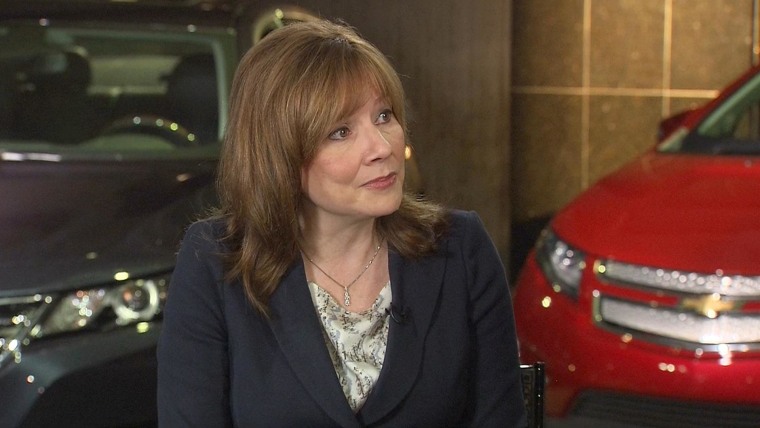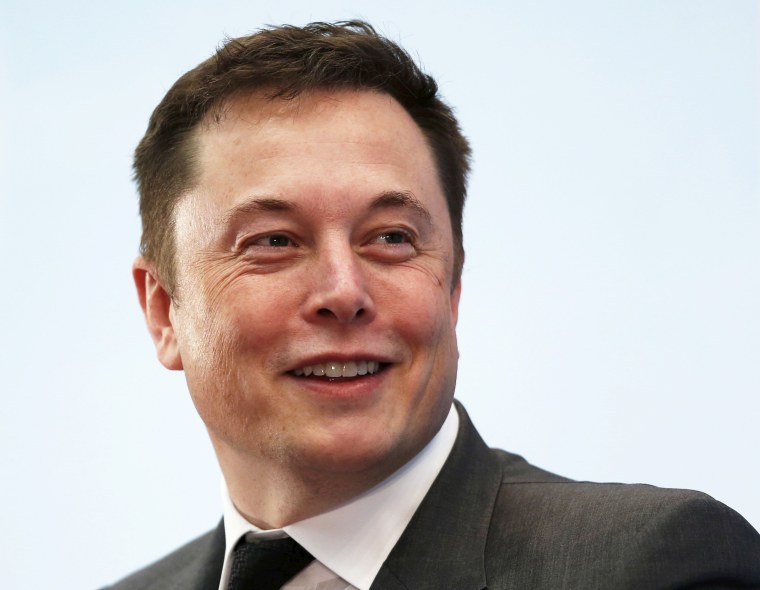One carmaker has run billions of dollars into the red with one loss after another. The other has been delivering record and near-record earnings. One sold 10 million vehicles last year, the other barely nudged six figures. But if you think the money-maker is the darling of Wall Street, think again.
The two companies held their annual meetings on the same day this week, but the stock charts reveal a significant difference in the way investors responded to equally upbeat messages from Tesla CEO Elon Musk and General Motors Chairman and CEO Mary Barra.

In the days since investors gathered near Tesla’s Silicon Valley headquarters on Tuesday, the battery-carmaker’s already high-flying stock has surged to new record highs. Closing Wednesday at $359.65, the automaker was worth about $59 billion, according to Wall Street, over $7 billion more than General Motors, whose stock appears to be stuck in neutral.
Related: Cash-Strapped Tesla Now Worth More than GM
That might have casual observers scratching their heads, especially when one considers Tesla has gone into the black only twice since it went public — losing $1.33 a share during the first quarter of this year, about 60 percent more than was forecast. GM, on the other hand, has been solidly in the black since emerging from its 2010 bankruptcy, its first quarter earnings rising 34 percent, to $1.70 a share, handily beating its own forecast.
Tesla vs a Downturn
What’s wrong with this picture? Investors are betting on Tesla to deliver massive growth in the near to mid-term, said analyst Joe Phillippi, of AutoTrends Consulting, while they’re worried that with U.S. auto sales starting to slump, GM is all too prone to make the same mistakes — and suffer the same sort of earnings collapse — that has occurred during virtually every prior downturn.
There are, to be sure, some serious skeptics warning that the sky could soon fall for Tesla. Efraim Levy, of CFRA Research, has bucked conventional wisdom, repeatedly advising investors to sell their shares. But Brad Erickson, of Pacific Crest Securities, is among the bulls, holding a near-term positive view and raising his target price for Tesla stock to an astounding $439 a share.
Both GM and Tesla management had to face off with activist investors during their annual meetings this week. The Detroit maker ultimately beat back a push by Greenlight Capital to divide its stock into two classes. The Silicon Valley rival fended off a proposal that would have had board members face reelection annually, rather than the current three years, something that could have put more pressure on Musk to deliver short-term returns.
There never seemed any real likelihood the Tesla proposal would pass, however. Its meeting was as close to a love-fest as one could imagine, Musk repeatedly receiving hoots of approval and loud applause.

The GM meeting was far more subdued, even if the well-liked Barra received a fair share of praise for what she has done since becoming the first female automotive CEO three years ago. Even GM critics have praised her efforts to break with often unhealthy traditions, turning the Detroit maker into a leaner, more nimble company focused on the future.
Perhaps nothing symbolizes what Barra has in mind more than the Chevrolet Bolt EV that went on sale a little more than a year ago. It became the first long-range, mainstream-priced EV, quickly winning kudos — including being named 2017 North American Car of the Year. But sales expectation are modest and analysts expect the Bolt to remain a money loser, like most of the battery-electric vehicles that the industry has so far launched.
Then there’s the Model 3, Tesla’s own entry into the mainstream world. It will cost roughly the same as the Chevy Bolt, around $35,000 to start — or barely half what the bigger Model S sedan now goes for. But Tesla has big expectations for the small electric sedan. Musk reiterated during the annual meeting that Tesla is projecting overall sales will reach about 500,000 vehicles in 2018, a five-fold increase from 2016, with the small sedan accounting for nearly 80 percent of that figure. Despite its lower MSRP, economies of scale, he insisted, will put the carmaker solidly into the black.
Add Musk’s plans to add even more models: an electric freight hauler set to debut in September, a battery pickup, and a compact SUV to complement the Model 3. Tesla may need anywhere from three to “possibly as many as 10 or 20” new assembly plants, the CEO declared. Meanwhile, he continues to predict big things to come from Tesla’s new Gigafactory battery plant in Nevada, from its energy storage business and from the solar roof tiles recently launched by new subsidiary Solar City.
But Tesla will, among other things, have to actually get the Model 3 into production, as promised, in July. It has never been on time so far, and even after lengthy delays, its products have a history of serious initial quality issues.
Related: It's Going to Cost You 30 Percent More to Insure That Tesla
High-end Model S buyers might tolerate that, said analyst Dave Sullivan, of AutoPacific, because they usually have other cars they can rely on when the electric vehicle is in the shop. “Mainstream buyers are going to be more demanding,” he stressed, “because a Model 3 is more likely to be the only vehicle they own.
Who's the Riskier Bet?
Even the Tesla bulls occasionally reveal some concerns. Pacific Crest analyst Erickson cautions demand for the company’s older models appears to be “plateauing,” which he says means "Half the (Tesla) profit pool could be facing declines as early as next year." But that hasn’t led him to cut his target stock price.
As for GM, the maker could see plenty of pressure on those recent, solid earnings, especially if the U.S. auto market continues to decline as sharply as it has so far this year. While IHS Automotive was predicting overall sales would be down just 100,000 units from the 2016 record of 17.5 million vehicles, others have begun riving their forecasts downward.
And that’s where Detroit makers have traditionally panicked, rolling out massive incentives to prop up demand, rather than trimming production and laying off workers. But GM has shown unexpected discipline, repeatedly matching output to declining demand, even while eliminating entire shifts at five different plants since just last November.
The bottom line, it seems, is that GM and Tesla both face significant — and significantly risky — issues in the coming year or two. Both could be hammered if current plans miss the mark. In fact, a major issue with the Tesla Model 3 could risk the entire company, some observers caution.
But, for now, investors seem to view the young company more like a Silicon Valley tech firm, betting on the upside potential, even while they focus on the downside risks at GM.
